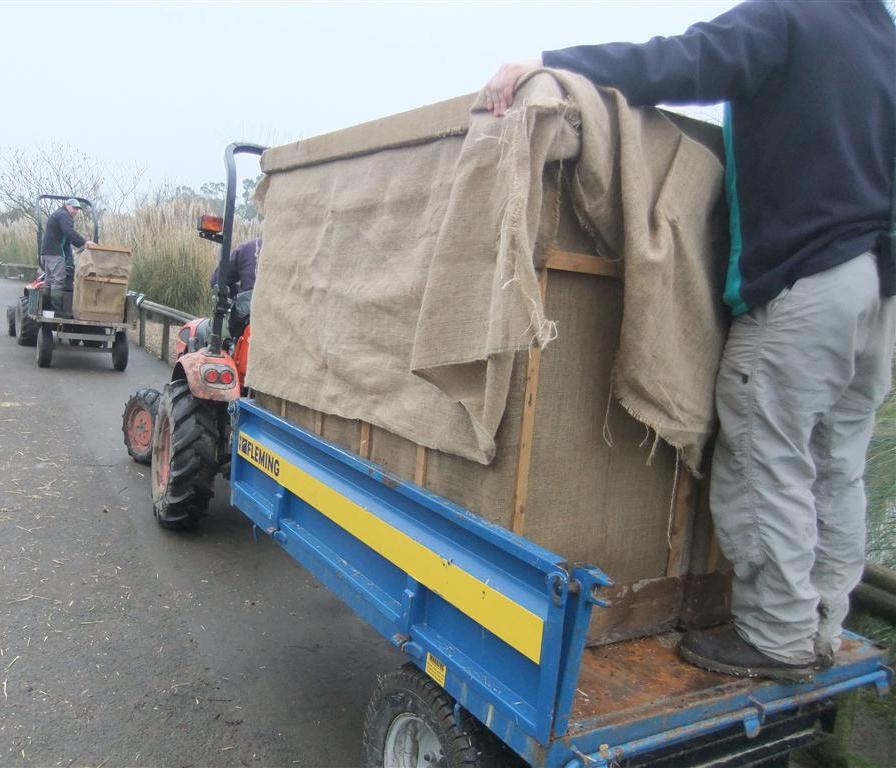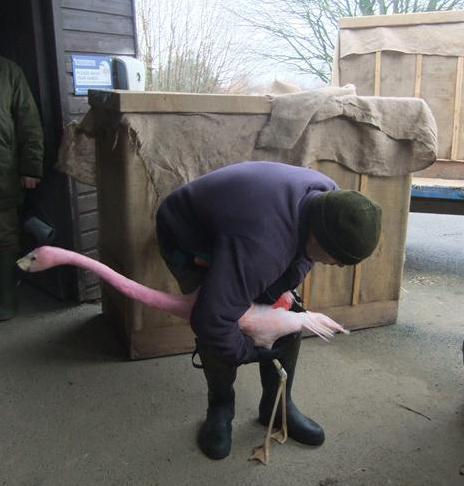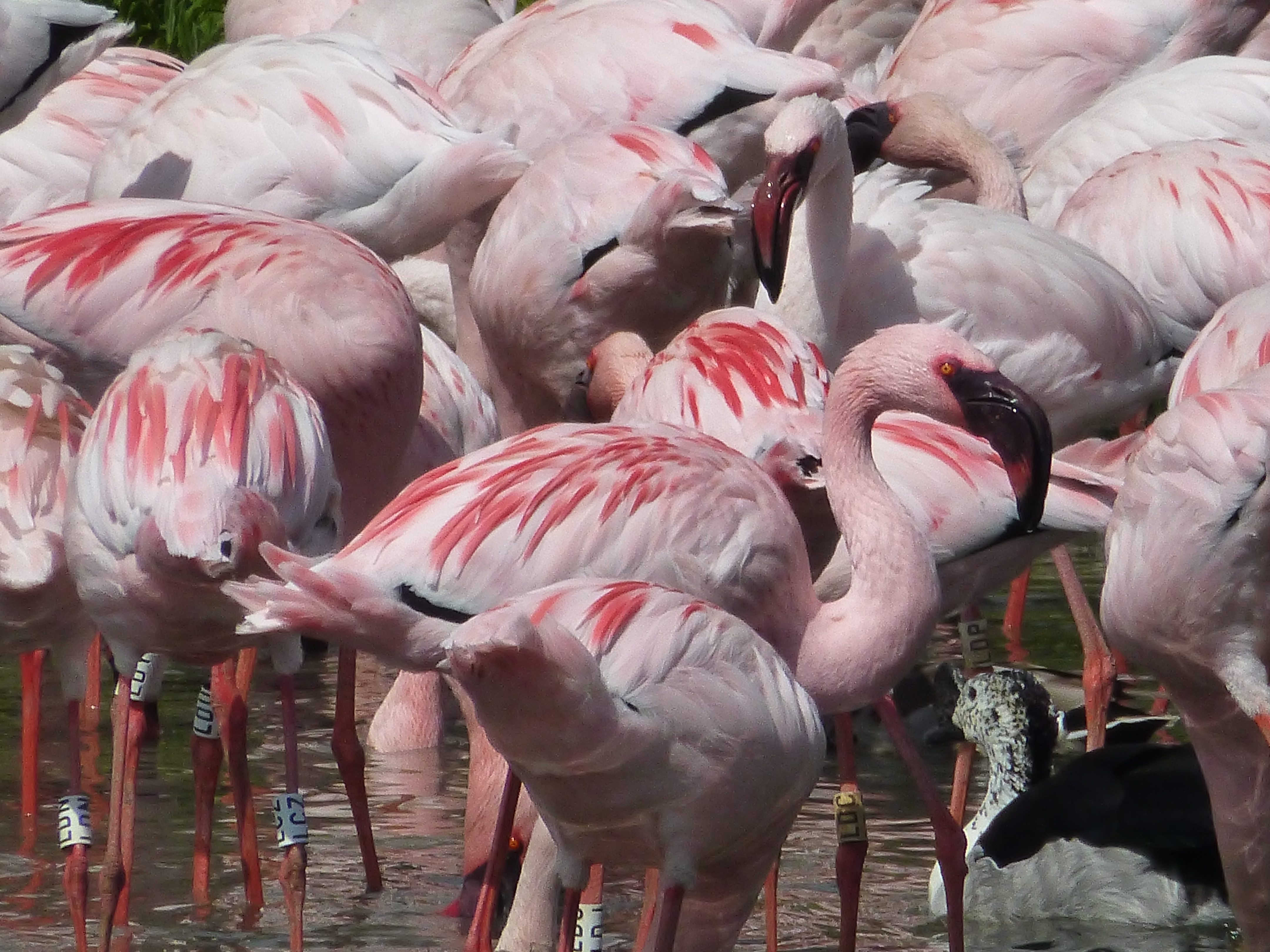A day in the life of a WWT flamingo keeper
In this instalment of the flamingo diary I thought I would talk about the people behind the flamingos at WWT Slimbridge alongside of the birds themselves. I mention a lot about Sparky and Phil, and the other avics who have a role in maintaining the flamingos in tip-top condition, well here’s a sneak peek into the routine of the care and management of around six-hundred-and-twenty flamingos that live at Slimbridge.
Phil, whose job it is to be in charge of the day-to-day care of the flamingos, has been working at WWT Slimbridge since 1986. Phil has always lived locally to Slimbridge and started volunteering at Slimbridge because of his interest in the birds and their behaviour. He has had the fortune of meeting and working with Peter Scott, and has some fond memories of watching him on his daily rounds to inspect his birds in the collection.
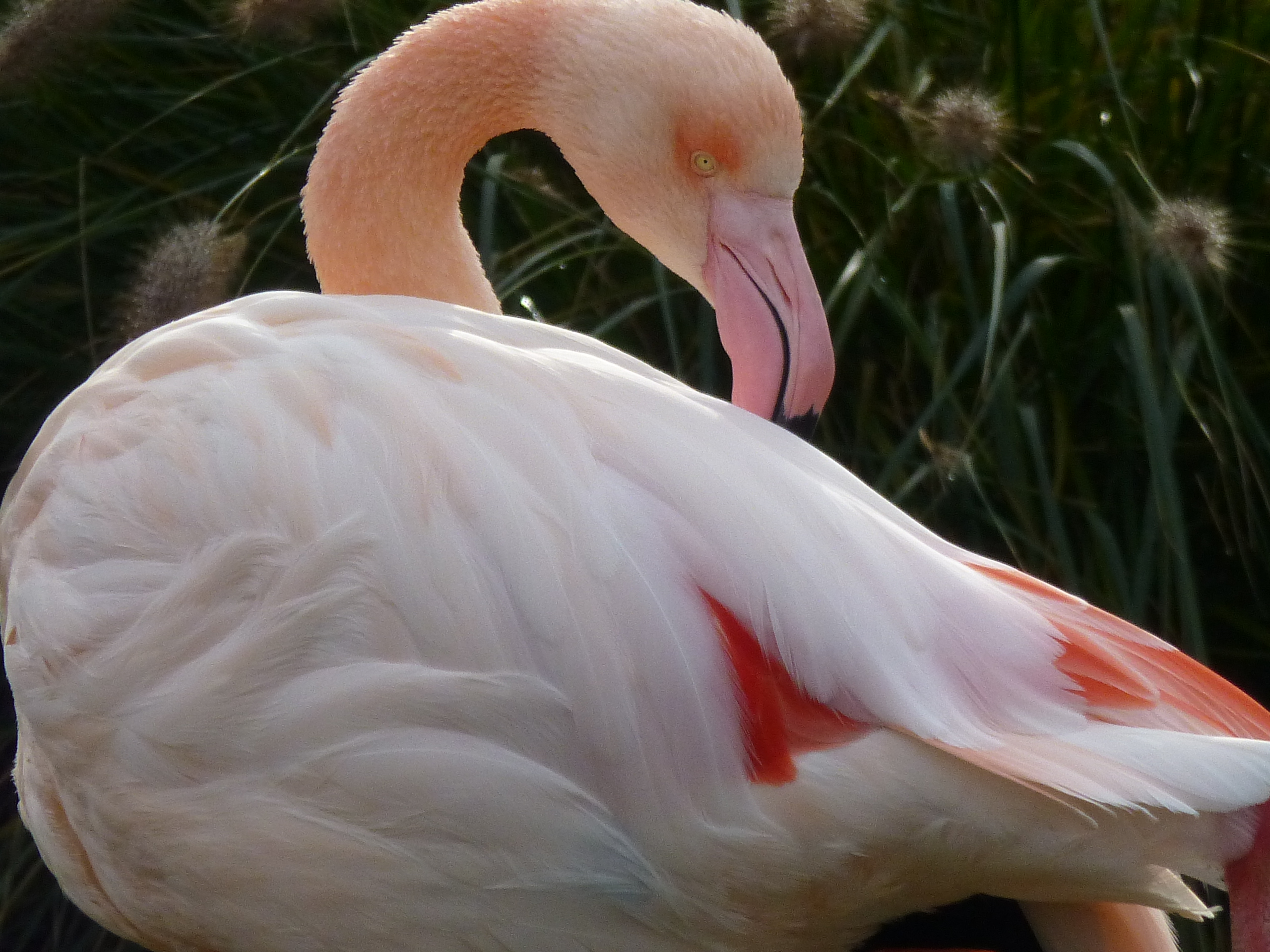 One of the sixty-year-old greater flamingos. Birds living for this long shows how well they are kept.
One of the sixty-year-old greater flamingos. Birds living for this long shows how well they are kept.
As you can probably imagine, the biggest job involved in keeping flamingos is cleaning. Especially when the birds are housed indoors overnight when the weather is cold. Phil keeps a close eye on the forecast and uses this to guide when to keep the flamingos in or when to let them have outdoor access overnight. The flamingos really do not like driving rain and strong winds, and ice is dangerous to them, so it’s important that their keepers have an idea of what the weather is likely to be doing, and can arrange the birds’ care accordingly. Winds of over 30 miles an hour are particularly troubling, so if such stormy weather approaches, Phil knows to keep the birds safe and warm inside. Flamingos need to be kept inside if their pools are likely to freeze overnight (more than just film ice, which is no threat) and not thaw quickly in the morning. The flamingos can only be let out when the ice has broken up and melted, and then there is no risk of slippages or breakages. It appears that the avics at WWT can give the Met Office a run for its money!
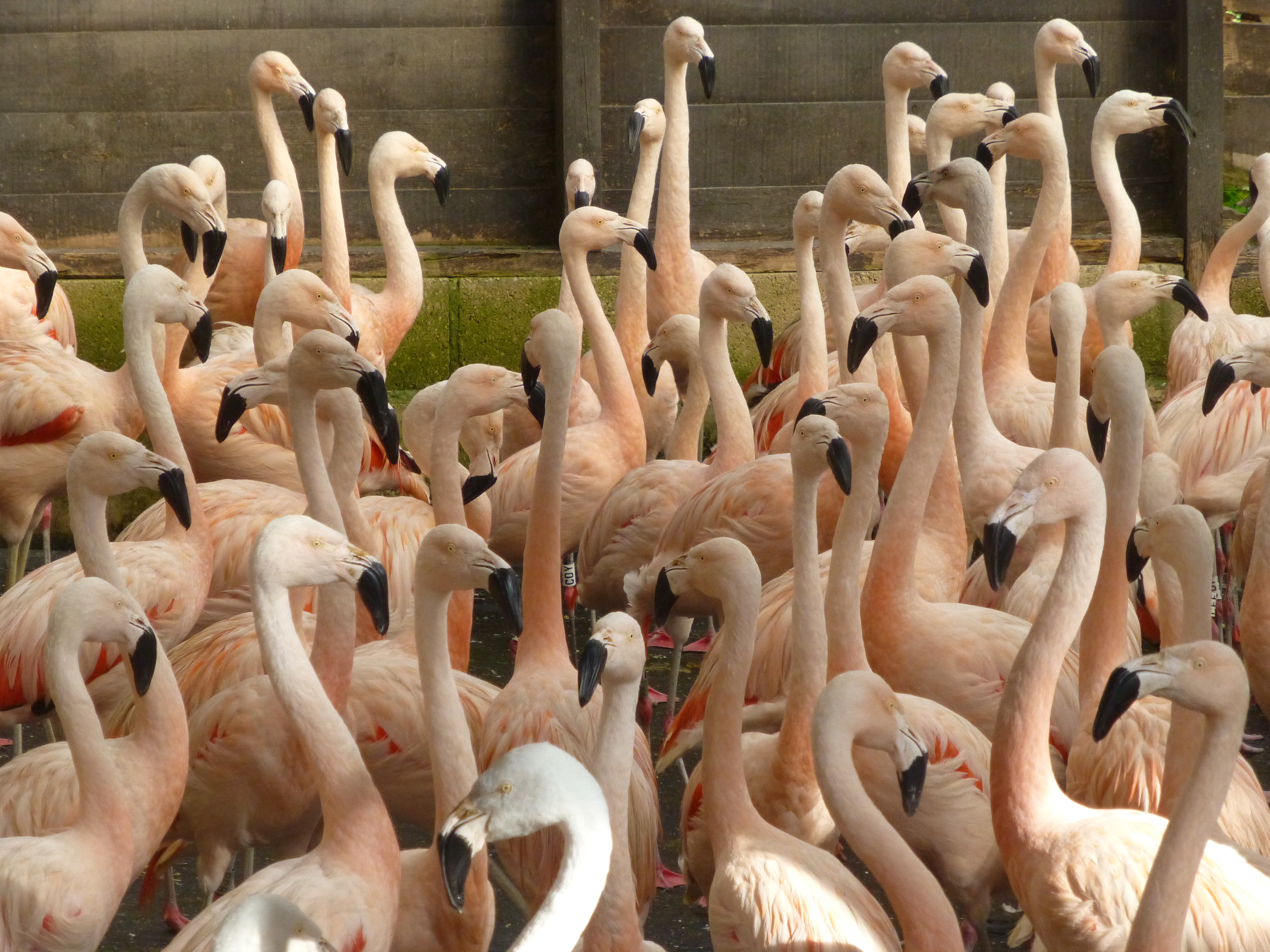 Bad weather keeps the Chilean flamingo flock indoors the day. That's a lot of flamingo droppings to be hosed down in the morning and evening!
Bad weather keeps the Chilean flamingo flock indoors the day. That's a lot of flamingo droppings to be hosed down in the morning and evening!
Phil’s day starts around eight o’clock in the morning, when he goes around each of the flocks to check them over, let them out of their houses (if needed), feed and clean them. Phil keeps to the same order starting with the Caribbean flamingos and working around to the greater and lesser flamingos. When the flamingos have been kept inside because of bad weather, the rubber matting inside the houses needs to be power-hosed down. This can take Phil two hours to complete in the morning and an hour-and-a-half in the afternoon; if the birds have been inside during the day their floors are cleaned again before they go to bed. Like all of the avics, Phil completes a diary of what has been going on with the birds every day so that all members of the avicultural team can keep up-to-date with the health and condition of all of the birds in the collection.
Phil also spends a fair amount of time moving sacks of flamingo pellet around, from the storage area at Top Hut and down to each of the flamingo houses. Given the large numbers of birds at WWT Slimbridge it is not surprising that they eat a lot of food, and hence part of Phil’s day is spent driving a tractor and trailer loaded with sacks of flamingo food up and down the Grounds. As an estimate, Phil reckons he moves about seventy bags of pellet from Top Hut to the flamingo houses each week.
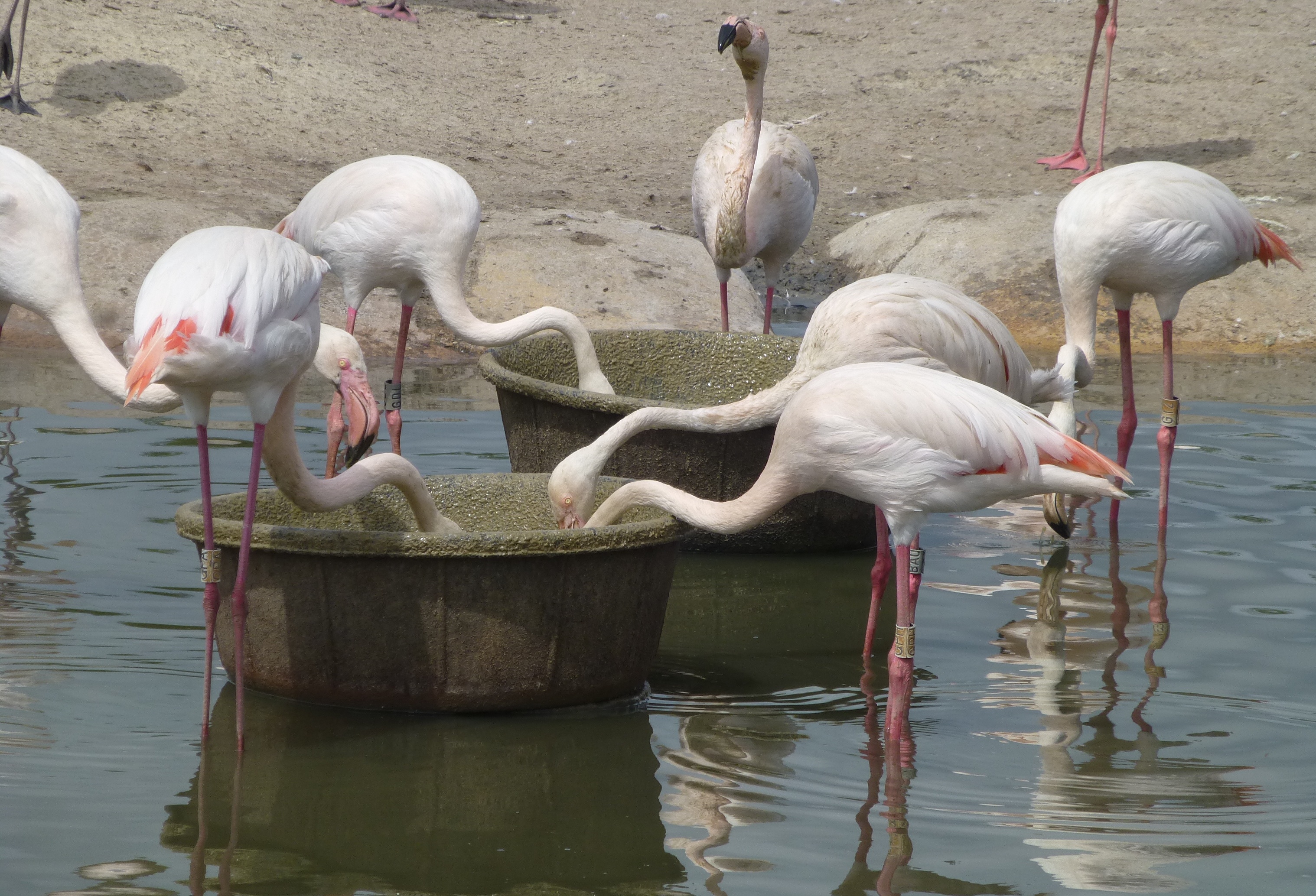 When you have around 280 flamingos in one place, they will eat a lot of dinner!
When you have around 280 flamingos in one place, they will eat a lot of dinner!
Phil is good at his calculations of how much food to order in and feed out. The Caribbean flamingo flock consumes around 60 kg of pellet per day. The huge greater flamingo flock in Flamingo Lagoon eats approximately 100 kg of pellet per day, and that is the equivalent of one trailer load of flamingo pellets driven up to Flamingo Lagoon each and every week. Phil also provides the flamingos with some tasty treats, in the form of duck weed, which the birds will filter for over many hours.
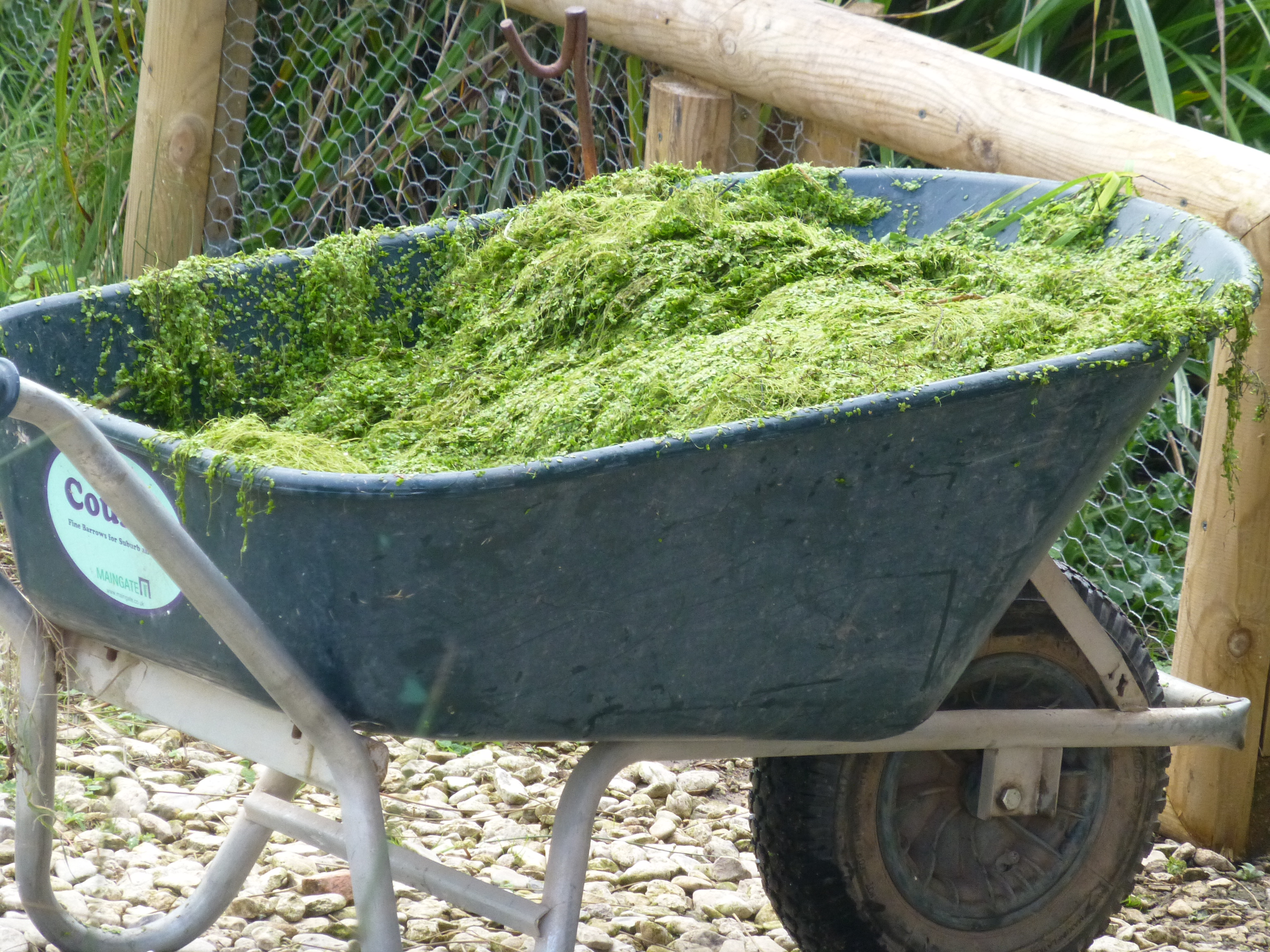 A barrow-load of duck weed for flamingo enrichment.
A barrow-load of duck weed for flamingo enrichment.
As well as cleaning and feeding, Phil also has an important role in flamingo catches and moves, and helps with handling the birds when they need to be caught for whatever reason. The tried and test "WWT method" of catching flamingos has been exported to numerous other organisations as the safest way to catch birds when they need to be handled and restrained.
Sparky and Phil coordinate moves of birds and flamingo catches. Here, the Andean flamingos move from the South American Pen in January 2013. Photo credit: P. Vaughan.
When flamingos are transported, they are moved in special, padded crates for comfort. Phil checks on birds after their move. Photo credit: P. Vaughan.[/caption]
There is a "WWT way" of catching and handling a flamingo. Phil demonstrates best practice of how to pick up a bird for safe handling. Photo credit: P. Vaughan.
Phil used to look after some of ducks at Slimbridge as well as the flamingos, but since 2010 his sole animal responsibility is for the flamingos. However, a surprising task that Phil is in charge of is the regulation of the water supply that flows around the various pools and enclosures in the Grounds at Slimbridge. As Phil does the flamingo rounds, he checks the pumps and sluices and various contraptions that keep the pools topped-up and the water flowing from enclosure to enclosure, finally out of the Grounds into the reed bed filter, and then into the River Severn itself.
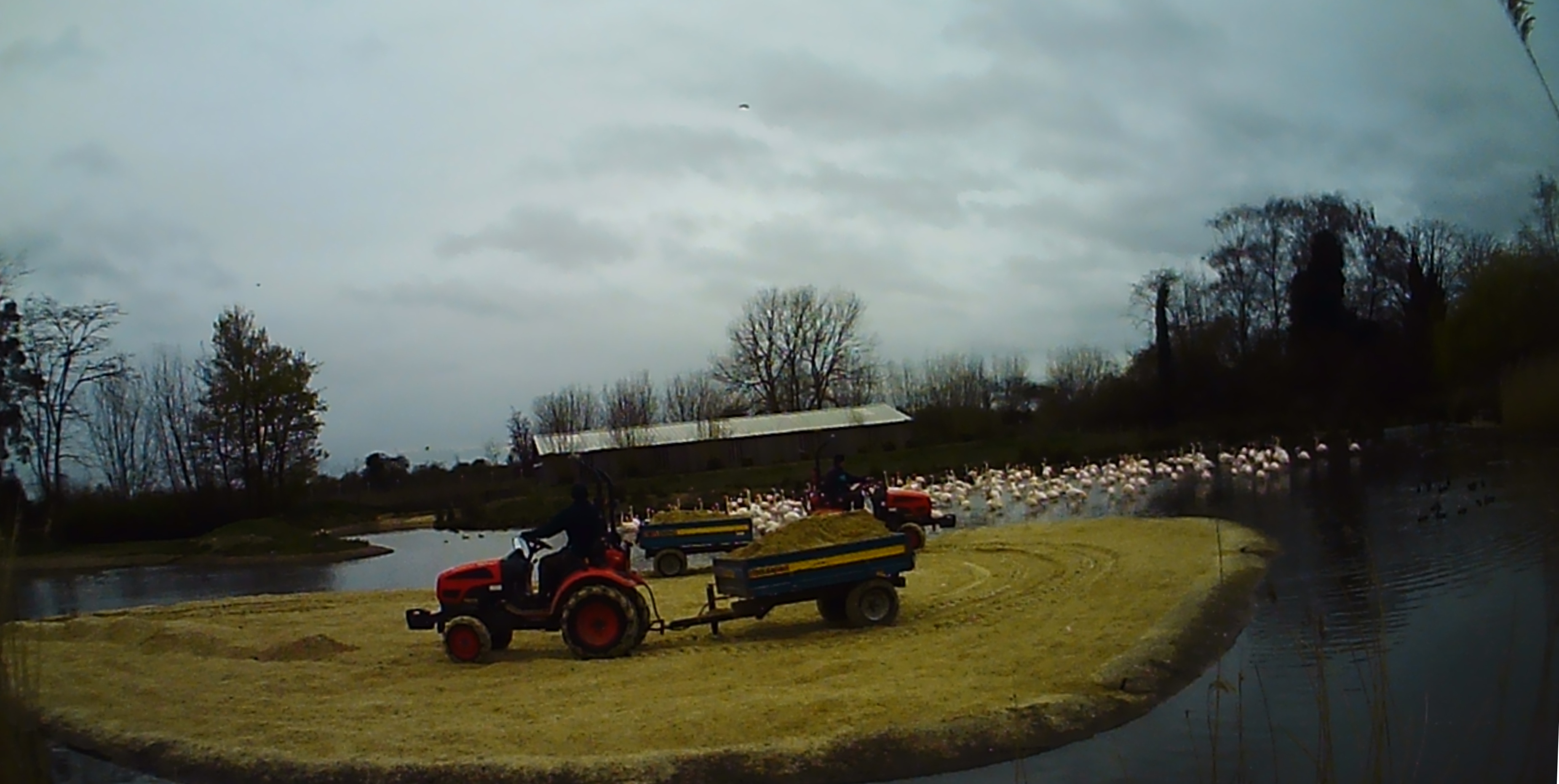 The remote cameras used to record the night-time behaviour of the greater flamingos this year, also picked up Phil and Sparky driving tractor-loads of sand onto the nesting island in preparation for the birds to breed.
The remote cameras used to record the night-time behaviour of the greater flamingos this year, also picked up Phil and Sparky driving tractor-loads of sand onto the nesting island in preparation for the birds to breed.
There are two entry points for water to flow into the Grounds at Slimbridge, and because Phil’s job is to keep the water moving he can raise and lower the level of water in the flamingo enclosures around the breeding season to encourage ideal conditions for nesting. Since summer 2012, sand has been used on the flamingo nesting islands, not only to keep their feet nice and healthy but also so the birds can build cleaner nests for their eggs and chicks. This was a real change in tradition at Slimbridge as the avics used to spend many hours building mud mounds for the flamingos to nest on. Now they have to move many tonnes of sand each spring into each of the enclosures and shovel it from trailer to island and let the birds chose where they fancy nesting. Once the flamingos do start to breed, Phil records when and where eggs are laid and does daily checks on the colonies to ensure that breeding is progressing well. Both Phil and Sparky run the incubation of the flamingo eggs up at Top Hut, and they know when eggs will be hatching to be returned to a parent bird.
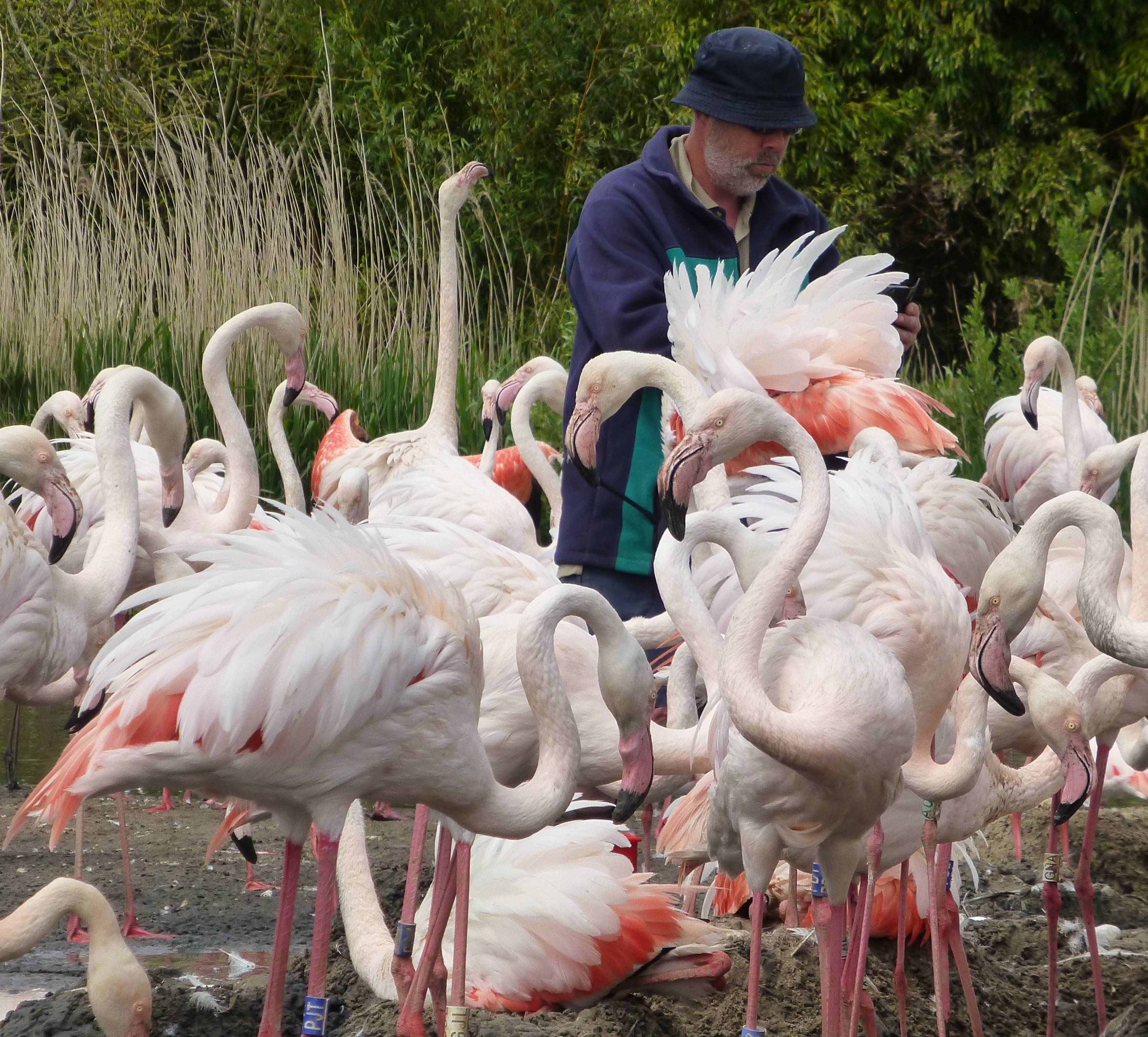 Phil records where eggs have been laid and what chicks are hatching in the Slimbridge greater flamingo flock.
Phil records where eggs have been laid and what chicks are hatching in the Slimbridge greater flamingo flock.
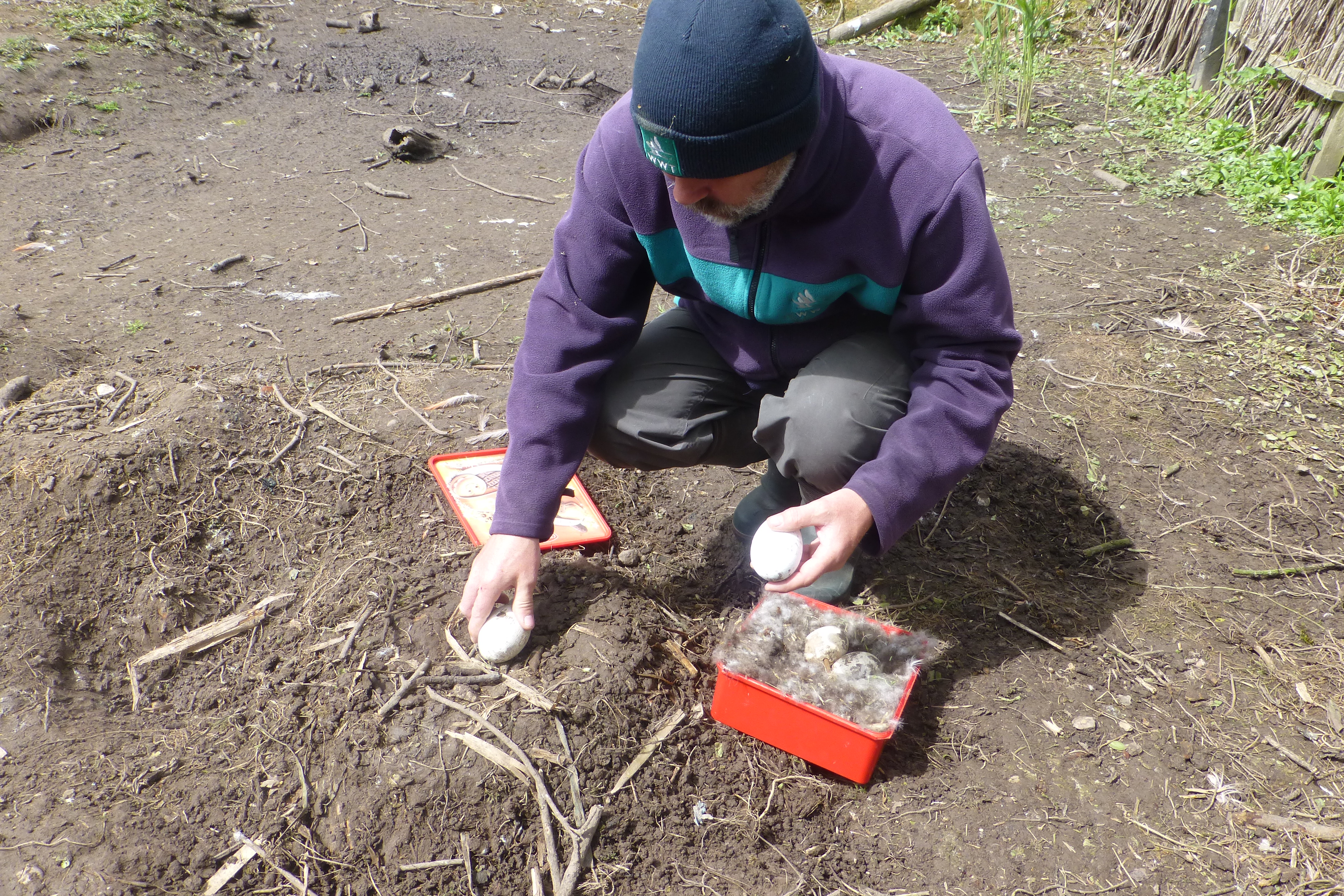 Phil checks on Caribbean flamingo eggs at the start of the breeding season.
Phil checks on Caribbean flamingo eggs at the start of the breeding season.
All of this attention to detail pays off. The breeding season this summer has seen nine Caribbean and seventeen greater flamingo chicks successfully raised. Phil and Sparky keep a watchful eye on the numbers of young hatched in the flocks to make sure that birds are replacing themselves but that populations do not get too big. Eggs are donated to other WWT centres or other zoological organisations to hatch if more than what are needed at Slimbridge have been laid.
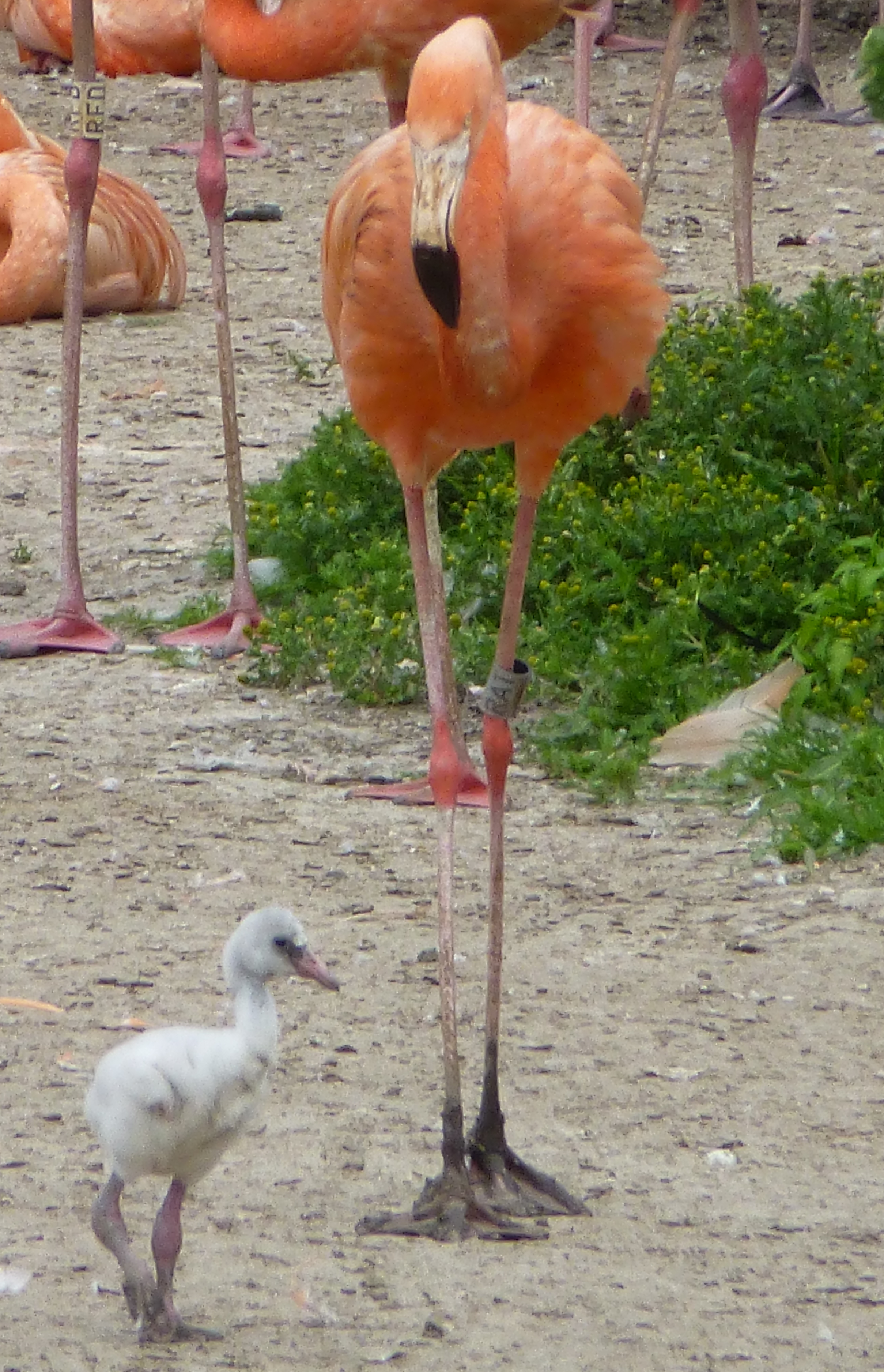 A new arrival in summer 2016 is in part down to the hard work of Phil, Sparky and co.
A new arrival in summer 2016 is in part down to the hard work of Phil, Sparky and co.
Although Phil finds all of the flamingo fascinating, because of their evolution and unusual natural history, his favourite flock are the lessers. They have the most intricate set of behaviours and some of the most interesting vocalisations. Phil thinks that these birds need the most special care because of their small size and very specialised nature. The challenge of keeping this species is something that he really values and enjoys.
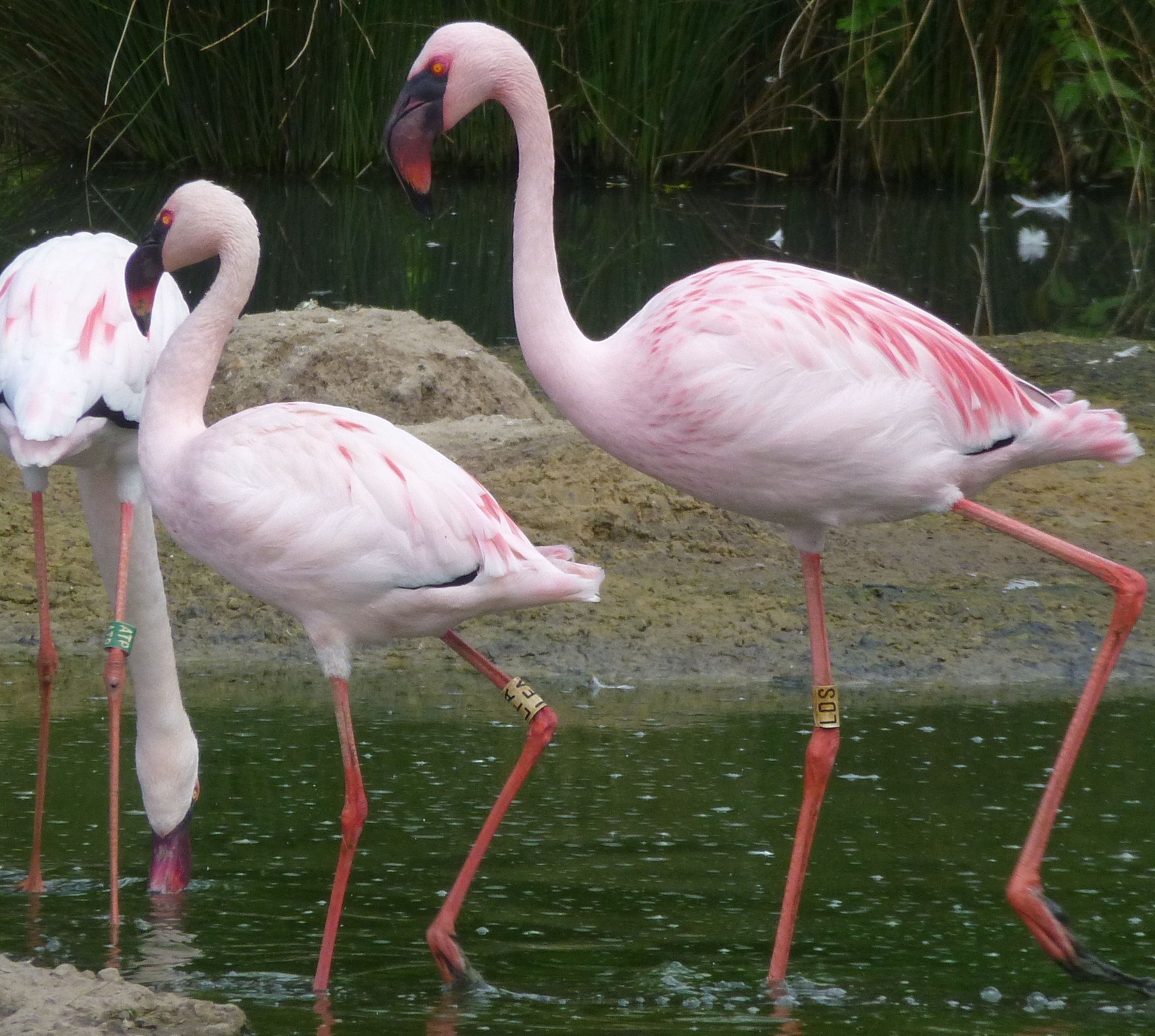 The smallest and most sensitive species, and Phil's favourites of all the flamingos at WWT.
The smallest and most sensitive species, and Phil's favourites of all the flamingos at WWT.
I hope that you have enjoyed reading this small insight into the hard work of the bird keeping staff here at WWT Slimbridge. Animal care is a 24 hour, seven-days-a-week job, and it the dedication of the whole avicultural team at all WWT centres that keeps the birds looking so good. I also just want to say a big “thank you” to Phil himself for letting me bug him over his tea break with a whole load of questions about his job.
